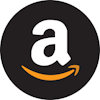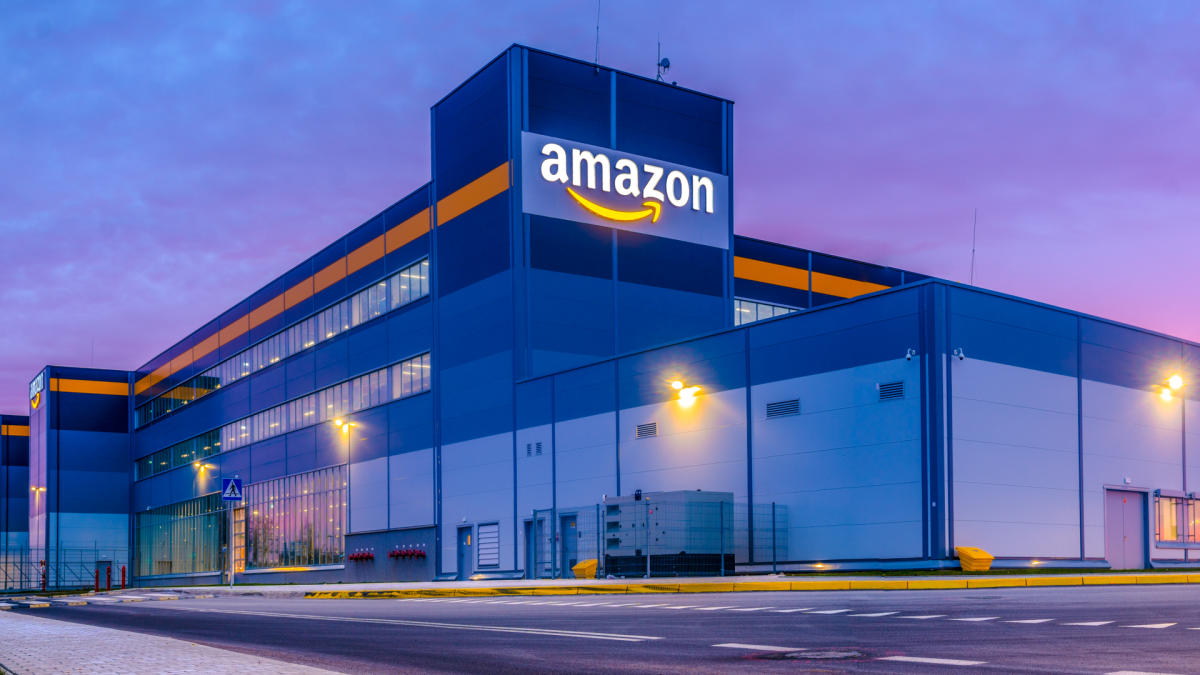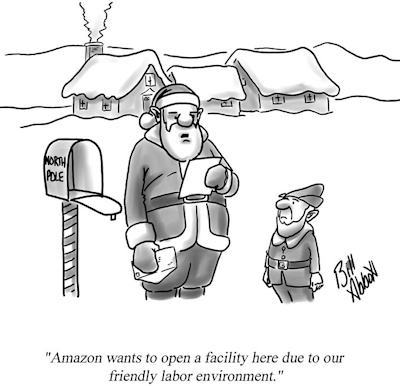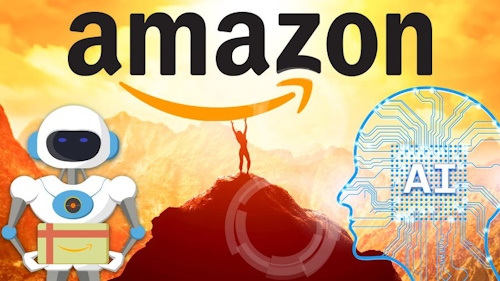 Amazon
Amazon
Everything online, from A to Z
A Mag7 company, Amazon is one of the world's largest and most influential companies, evolving from an online bookstore into a global tech giant. Amazon's journey reflects countless innovations, from selling books to shaping global retail, cloud computing, and AI. Its impact on commerce, tech, and culture has few parallels.

Here's a brief history of Amazon's key milestones:
Founding and Early Growth 💰
1994: Jeff Bezos founded Amazon in his garage in Bellevue, Washington, initially as an online bookstore named Cadabra, as in Abra Cadabra, a word used in magic. Bezos later renamed the enterprise Amazon, after the world's largest river, to reflect his vision of scale. It was renamed because someone mistakingly called the original name "cadaver".
- 1995: Amazon.com launched, selling its first book, Fluid Concepts and Creative Analogies, by Douglas Hofstadter.
- 1997: Amazon went public (NASDAQ: AMZN) at $18 per share. It expanded beyond books into music and DVDs.
- 1998: Entered new markets in Europe, UK and Germany, and added categories like electronics and toys.
- 1999: Bezos was named Time Magazine's "Person of the Year" for popularizing e-commerce.
Expansion and Innovation 🚀
From 2000 to 2010, Amazon underwent a dramatic transformation, evolving from an online bookstore into a global technology and retail giant. Amid the dot-com bust, even though it was losing money, Amazon survived by focusing on operational efficiency and customer satisfaction. It opened its marketplace to third-party sellers, began selling photo and camera items, and formed alliances with large retail companies. The company also launched its first overseas operations and introduced free shipping offers for large orders.
- 2000: Launched Amazon Marketplace, allowing third-party sellers.
- 2002: Introduced Amazon Web Services (AWS), initially for internal infrastructure and later, a leader in cloud computing leader.
- 2005: Launched Amazon Prime, a subscription service for fast shipping, which was subsequently expanded to video, music, and more.
- 2007: Released the Kindle e-reader, revolutionizing digital books.
- 2009: Acquired the online shoe retailer Zappos for $1.2 billion.
Dominance and Diversification 💸
During this period, Amazon experienced explosive growth, diversification, and global expansion, establishing itself as a force in technology, retail, logistics, and cloud computing. The company expanded its international presence, launching localized storefronts in major markets and making several acquisitions. In 2015, Amazon surpassed Walmart to become the largest retailer in the United States, reflecting its dominance in both e-commerce and, increasingly, physical retail.
- 2011: Expanded into original content with Amazon Studios.
- 2012: Acquired Kiva Systems for warehouse robotics and launched Amazon Fresh grocery delivery service.
- 2014: Unveiled Amazon Echo with voice assistant Alexa.
- 2015: Surpassed Walmart as the most valuable U.S. retailer.
- 2017: Acquired Whole Foods Market for $13.7 billion, entering the physical retail space.
- 2018: Chose sub-headerquarter locations in Arlington, Virginia, and New York, although they later withdrew from New York amidst negative feedback.
- 2019: Jeff Bezos stepped down as CEO, yet remaining executive chair, as Andy Jassy of AWS assumed the throne.
With an influx of cash, Amazon made several major acquisitions during this period. These are:
- Quidsi (2010): Acquired the parent company of Diapers.com and Soap.com for $545 million, expanding into family and household goods.
- Kiva Systems (2012): Purchased for $775 million, this robotics company revolutionized Amazon's warehouse automation, paving the way for faster and more efficient fulfillment.
- Twitch (2014): Acquired for $970 million, Twitch gave Amazon a major stake in live streaming and gaming communities.
- Whole Foods Market (2017): The $13.7 billion acquisition marked Amazon's largest deal to date, providing a nationwide network of physical grocery stores and integrating online and offline retail.
- Ring (2018): Acquired for $1 billion, this move strengthened Amazon's position in the smart home and security market.
- PillPack (2018): For $753 million, Amazon entered the pharmacy business, laying the groundwork for Amazon Pharmacy.
- Eero (2019): Acquired to bolster Amazon's smart home connectivity with mesh Wi-Fi technology.
- Zoox (2020): The $1.2 billion acquisition brought Amazon into autonomous vehicle technology, with potential for logistics and delivery innovation.
Pandemic Boom and Challenges 🛍
Since the pandemic, Amazon has solidified its leadership in e-commerce, cloud computing, and digital content, while expanding into healthcare and especially AI. The company survived pandemic challenges and fierce competition, all while delivering record revenues and profits. Strategic acquisitions, technological innovation, and bold moves-like a potential TikTok acquisition-underscore Amazon's ongoing evolution as a global tech and retail giant. Finally, founder Jeff Bezos stepped down to concentrate on other ventures.
- 2020: COVID-19 surged demand for e-commerce and AWS, and revenue soared to $386 billion, which was up 38% from the prior year.
- 2021: Andy Jassy became CEO, allowing Jeff Bezos to focus on his space venture Blue Origin.
- 2022: Acquired MGM Studios for $8.5 billion to boost Prime Video.
- 2023: Laid off 27,000+ employees amid cost-cutting, although Amazon remained a $1.7 trillion company by market cap.
- 2024: Expanded AI efforts into Amazon Q, Bedrock, and others and invested $4 billion in Anthropic, maker of Claude.
 Key Business Segments Today
Key Business Segments Today
- E-commerce: Marketplace, Prime, Whole Foods
- AWS: Cloud computing leader, ~33% market share
- Advertising: 3rd-largest digital ad platform
- Entertainment: Prime Video, MGM, Twitch
- AI and Devices: Alexa, Kindle, Ring, Astro robot
 Amazon AI
Amazon AI
Amazon has heavily invested in AI across its business segments, from e-commerce and cloud computing to devices and entertainment. Amazon's AI strategy is end-to-end, from infrastructure with AWS to consumer products with Alexa. While it trails OpenAI and Google in high-profile chatbots, its focus on practical, revenue-driven AI such as e-commerce, cloud, and ads keeps it in the game.
AI in E-Commerce and Logistics 🤖
- Recommendation Systems: Amazon's AI-driven product recommendations account for over a third of sales, using deep learning to personalize suggestions.
- Supply Chain and Fulfillment: AI optimizes warehouse operations with Kiva robots and delivery routes, reducing costs and speeding up shipments.
- Just Walk Out Cashierless Stores: Uses computer vision, sensor fusion, and AI in Amazon Go, Fresh, and Whole Foods stores for frictionless shopping.
Amazon Web Services (AWS) AI Services 🏢
AWS is a leader in cloud-based AI tools, serving businesses from small startups to large enterprises. Here are some of their leading-edge services:
- Amazon SageMaker: Fully managed service for building, training, and deploying machine language models.
- Amazon Bedrock: A fully managed service offering generative AI models including Anthropic's Claude, Meta's Llama 2, and Amazon's Titan.
- Amazon Q: An AI-powered business assistant, like ChatGPT for AWS, launched in 2024.
- Amazon Rekognition: Image and video analysis including facial recognition and object detection.
- Amazon Lex: The framework behind Alexa, used for building chatbots.
- CodeWhisperer: AI coding assistant that competes with GitHub Copilot and others. Free for individual use.
Alexa and AI-Powered Devices 📲
- Alexa Voice Assistant: Uses natural language processing (NLP) and connects to smart home devices like Echo, Ring, and more.
- Generative AI Upgrades: In 2023, Amazon announced a more conversational, large language model powered Alexa based on a custom model, not ChatGPT.
- Astro Home Robot: Combines AI, computer vision, and Alexa for home monitoring.
AI in Entertainment and Advertising 🎭
- Prime Video Recommendations: AI curates personalized content (like Netflix's algorithm).
- AI-Generated Content: Amazon Studios experiments with AI for scripts, dubbing (Project Kuiper), and ad targeting.
- Advertising AI: Uses machine learning to optimize ad placements (3rd-largest digital ad platform after Google/Meta).
AI Research and Investments 💰
- Amazon Science: In-house research lab focused on NLP, robotics, and quantum computing.
- Anthropic Investment: Invested $4 billion into the Claude AI developer that competes with OpenAI.
- AI Chips Trainium and Inferentia: Custom silicon to lower AI training and inference costs on AWS.

 Challenges
and Controversies
Challenges
and Controversies
- Bias in AI: Rekognition service faced criticism for racial and gender bias in facial analysis.
- Job Displacement: Automation in warehouses raises labor concerns.
- The US Federal Trade Commission and the European Union, under the AI Act, are investigating Amazon's AI data practices.
- Labor practices regarding warehouse conditions, supported by labor unions.
- Market dominance antitrust scrutiny in the U.S. and the EU
- Environmental impact over Amazon's carbon footprint and plastic waste
 Future of Amazon AI
Future of Amazon AI
- Generative AI: Expanding Bedrock and Q for enterprise use.
- Healthcare AI: Amazon Clinic and One Medical integration.
- Autonomous Delivery: Drones, Prime Air, and self-driving vehicle projects.
